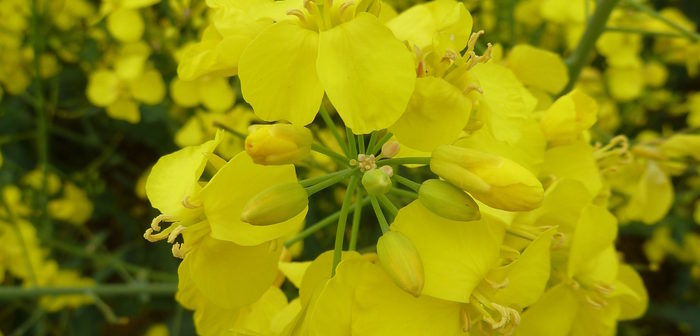Hybrid oilseed rape varieties Architect and Aquila sit at the top of Agrii’s UK national trials harvest results.
Architect takes the lead position yielding an average of 4.74 t/ha over all sites of which is 112% over control, closely followed by Aquila at 4.68 t/ha; 110% of control.
Bred by Limagrain UK, both varieties have demonstrated the value of a range of OSR traits such as pod shatter resistance and TuYV resistance, as well as robust on-farm agronomics which act to protect yields from environmental and crop management factors – and these seem to have played a crucial role in securing the excellent performance of these varieties this season, says Agrii’s David Leaper.
Architect is a TuYV resistant hybrid and Mr Leaper believes that this has clearly contributed to Architect’s high yields.
Turnips yellows virus (TuYV) is spread by the peach potato aphid (Myzus persicae), and can impact yields by as much as 30% in highly infected situations and oil content by 3%, whilst increasing levels of glucosinolates and erucic acid.
“Back in May we measured levels of TuYV infection from the varieties in all of Agrii’s UK trials by taking random leaf samples which were then tested in Limagrain’s laboratories.”
“The survey showed that TuYV is endemic in the UK OSR crop; levels of infection across the UK were high and for the first time sites in Scotland showed levels of infection as high as 75%.”
“Now it is possible to correlate this information to yields between resistant and non-resistant varieties.”
“At our Perthshire site where 75% of samples tested were infected with TuYV, Architect performed very well with yields of 4.9 t/ha; 115% of control, whereas non-resistant varieties such as PR46W21 succumbed to the virus, yielding only 85% of control at 3.6 t/ha.”
“Bishop Burton was also a highly infected site with 60% of samples carrying the virus, however Architect again gave a really impressive yield of 5.8 t/ha; 132% over control.”
Although TuYV resistance has clearly protected yield in these highly infected sites, it is important to note that other characteristics such as pod shatter resistance, winter hardiness and outstanding autumn vigour, will also have played a role in protecting yields in these hybrid varieties, Mr Leaper points out.
“The benefits of pod shatter resistance are now firmly recognised on-farm and the high degree of pod shatter resistance shown by Architect and Aquila reduces seed losses as the crops come to harvest and also during the harvesting process when the cutter-bar violently hits the stem.”
Aquila, another Limagrain hybrid, has also had a really good year; “at our Lenham site it did particularly well yielding 5.6 t/ha, 114% over control and it also performed well further north with yields from our Bishop Burton site coming in at 5.1 t/ha, 116% over control,” he adds.
“Looking at the cumulative result of the last two years, Aquila is the highest yielder in Agrii’s national trial network of ten fully replicated trials.”
Aquila shows medium speed of development in the autumn and, while behind varieties like Architect and DK Exalte, it makes up for it with an excellent disease profile, he explains.
“Agrii’s trials have demonstrated a positive correlation between treated and untreated yields and overall disease resistance over the past three years. Aquila’s high untreated trial yields reflect the particularly good ratings of 8 for phoma and 6 for Light Leaf Spot.”
“While phoma can be managed using a well-timed autumn spray, Aquila genetics allow this spray to be pulled back under lower risk conditions and focused on the more challenging disease, Light Leaf Spot.”
Mr Leaper points out that this disease, once limited to the north, has become endemic across the UK. “It is a progressive yield-robbing disease which is much harder to control and generally requires a foliar spray approach and variety choice remains a key factor.”
“In addition, Verticillium wilt was assessed in three of Agrii’s trials; Aquila was less affected by the disease than many other varieties in the trials, making it a good choice wherever rape was intensively grown in the rotation.”




